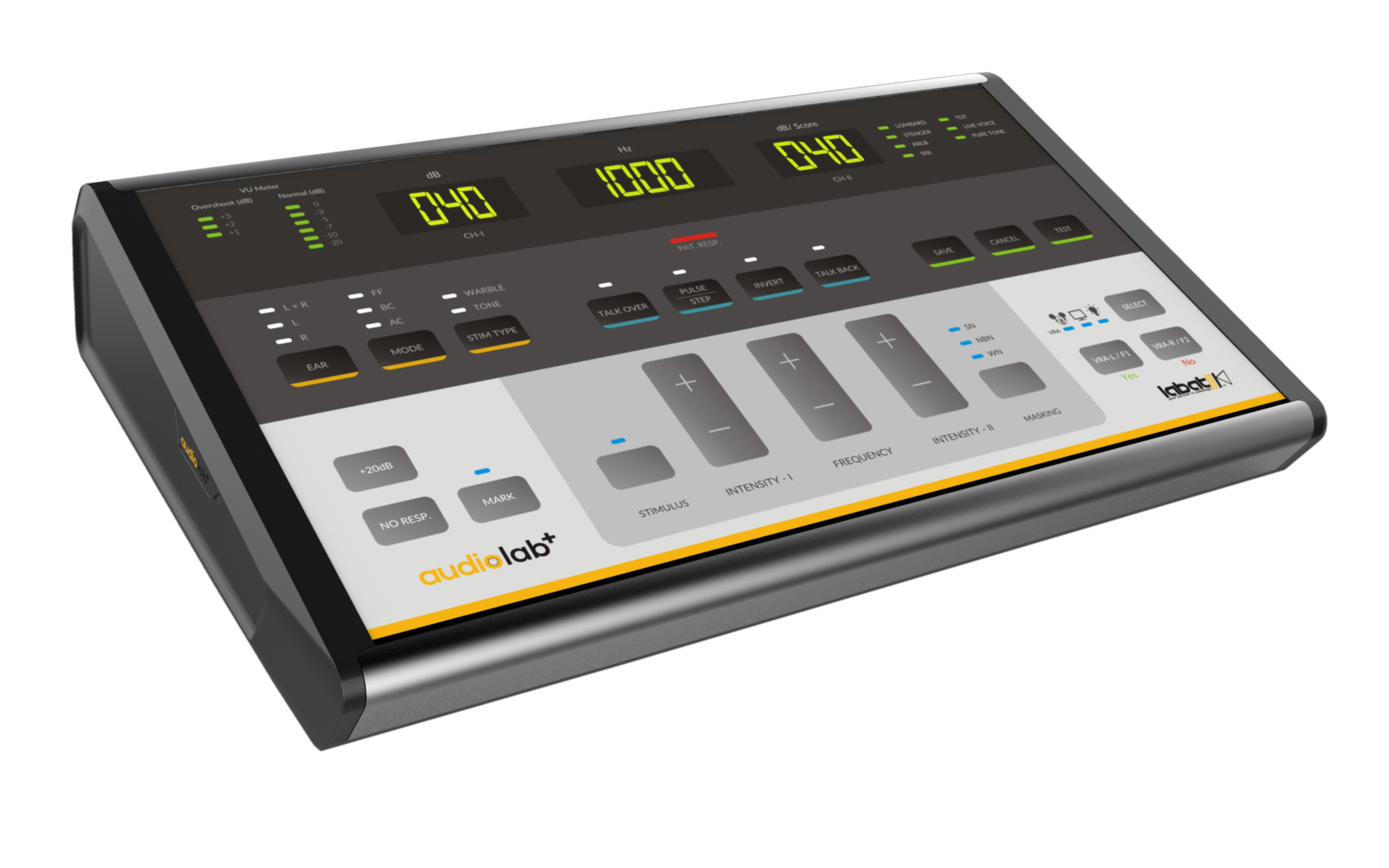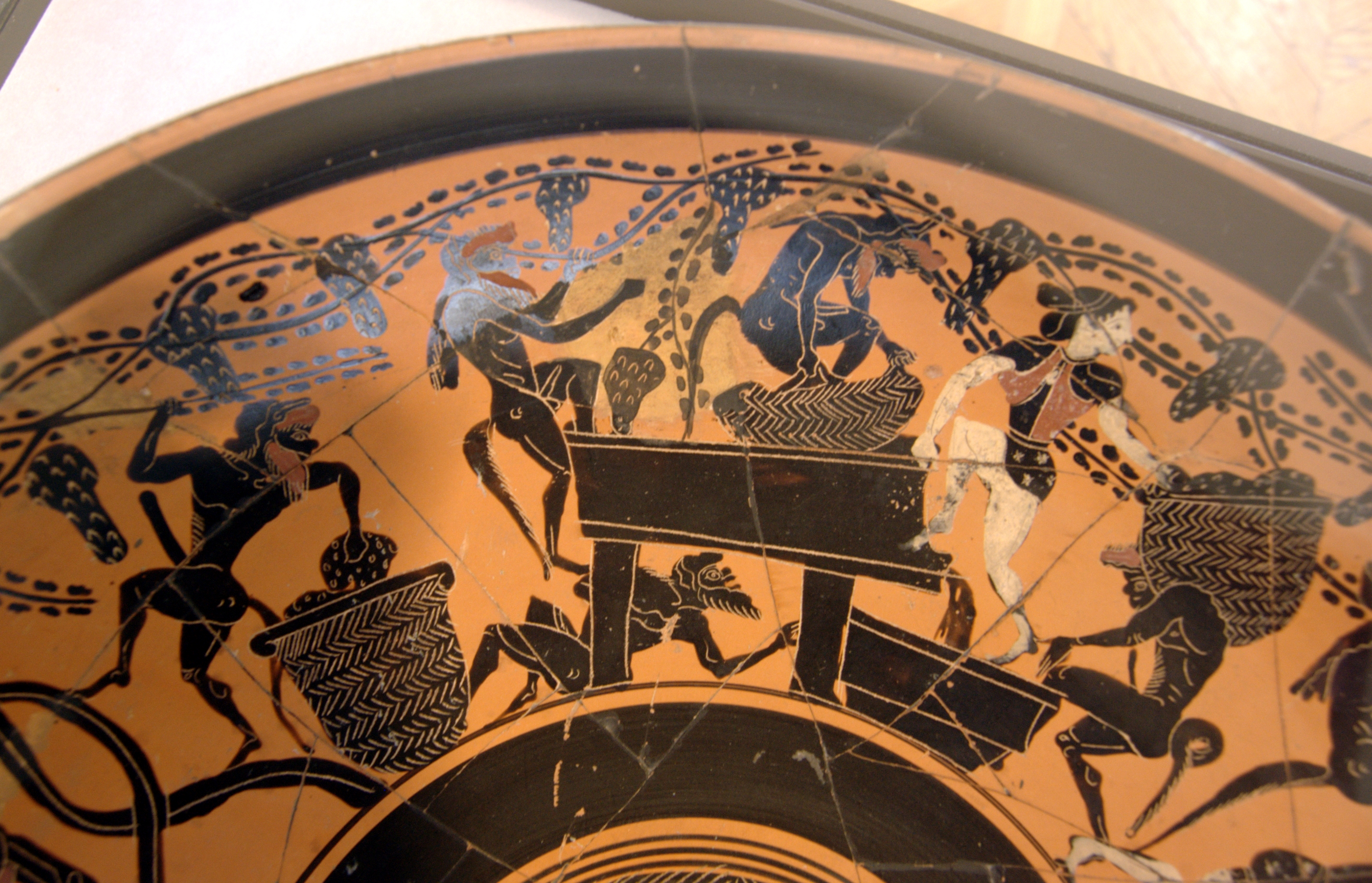|
Audiometer
An audiometer is a machine used for evaluating hearing acuity. They usually consist of an embedded hardware unit connected to a pair of headphones and a test subject feedback button, sometimes controlled by a standard PC. Such systems can also be used with bone vibrators, to test conductive hearing mechanisms. Audiometers are standard equipment at ENT (ear, nose, throat) clinics and in audiology centers. An alternative to hardware audiometers are software audiometers, which are available in many different configurations. Screening PC-based audiometers use a standard computer. Clinical PC-based audiometers are generally more expensive than software audiometers, but are much more accurate and efficient. They are most commonly used in hospitals, audiology centers and research communities. These audiometers are also used to conduct industrial audiometric testing. Some audiometers even provide a software developer's kit that provides researchers with the capability to create their ... [...More Info...] [...Related Items...] OR: [Wikipedia] [Google] [Baidu] |
Audiometry
Audiometry () is a branch of audiology and the science of measuring hearing acuity for variations in sound intensity and pitch and for tonal purity, involving thresholds and differing frequencies. Typically, audiometric tests determine a subject's hearing levels with the help of an audiometer, but may also measure ability to discriminate between different sound intensities, recognize pitch, or distinguish speech from background noise. Acoustic reflex and otoacoustic emissions may also be measured. Results of audiometric tests are used to diagnose hearing loss or diseases of the ear, and often make use of an audiogram. History The basic requirements of the field were to be able to produce a repeating sound, some way to attenuate the amplitude, a way to transmit the sound to the subject, and a means to record and interpret the subject's responses to the test. Mechanical "acuity meters" and tuning forks For many years there was desultory use of various devices capable o ... [...More Info...] [...Related Items...] OR: [Wikipedia] [Google] [Baidu] |
Audiogram
An audiogram is a graph that shows the audible threshold for standardized frequencies as measured by an audiometer. The Y axis represents intensity measured in decibels and the X axis represents frequency measured in hertz. The threshold of hearing is plotted relative to a standardised curve that represents 'normal' hearing, in dB(HL). They are not the same as equal-loudness contours, which are a set of curves representing equal loudness at different levels, as well as at the threshold of hearing, in absolute terms measured in dB SPL (sound pressure level). Audiograms are set out with frequency in hertz (Hz) on the horizontal axis, most commonly on a logarithmic scale, and a linear dBHL scale on the vertical axis. For humans, normal hearing is between −10 dB(HL) and 15 dB(HL), although 0 dB from 250 Hz to 8 kHz is deemed to be 'average' normal hearing. Hearing thresholds of humans and other mammals can be found with behavioural hearing tests or phy ... [...More Info...] [...Related Items...] OR: [Wikipedia] [Google] [Baidu] |
Headphones
Headphones are a pair of small loudspeaker drivers worn on or around the head over a user's ears. They are electroacoustic transducers, which convert an electrical signal to a corresponding sound. Headphones let a single user listen to an audio source privately, in contrast to a loudspeaker, which emits sound into the open air for anyone nearby to hear. Headphones are also known as earspeakers, earphones or, colloquially, cans. Circumaural ('around the ear') and supra-aural ('over the ear') headphones use a band over the top of the head to hold the speakers in place. Another type, known as earbuds or earpieces consist of individual units that plug into the user's ear canal. A third type are bone conduction headphones, which typically wrap around the back of the head and rest in front of the ear canal, leaving the ear canal open. In the context of telecommunication, a headset is a combination of headphone and microphone. Headphones connect to a signal source such as a ... [...More Info...] [...Related Items...] OR: [Wikipedia] [Google] [Baidu] |
Hearing Test
A hearing test provides an evaluation of the sensitivity of a person's sense of hearing and is most often performed by an audiologist using an audiometer. An audiometer is used to determine a person's hearing sensitivity at different frequencies. There are other hearing tests as well, e.g., Weber test and Rinne test. Ear examination Prior to the hearing test, the ears of the patient are usually examined with an otoscope to make sure they are free of wax, that the eardrum is intact, the ears are not infected, and the middle ear is free of fluid (indicating middle ear infection). Pure tone audiometry The standard and most common type of hearing test is pure tone audiometry, which measures the air and bone conduction thresholds for each ear in a set of 8 standard frequencies from 250Hz to 8000Hz. The test is conducted in a sound booth using either a pair of foam inserts or supraural headphones connected to an external audiometer. The result of the test is an audiogram diagram ... [...More Info...] [...Related Items...] OR: [Wikipedia] [Google] [Baidu] |
Audiology
Audiology (from Latin , "to hear"; and from Greek , '' -logia'') is a branch of science that studies hearing, balance, and related disorders. Audiologists treat those with hearing loss and proactively prevent related damage. By employing various testing strategies (e.g. behavioral hearing tests, otoacoustic emission measurements, and electrophysiologic tests), audiologists aim to determine whether someone has normal sensitivity to sounds. If hearing loss is identified, audiologists determine which portions of hearing (high, middle, or low frequencies) are affected, to what degree (severity of loss), and where the lesion causing the hearing loss is found ( outer ear, middle ear, inner ear, auditory nerve and/or central nervous system). If an audiologist determines that a hearing loss or vestibular abnormality is present, they will provide recommendations for interventions or rehabilitation (e.g. hearing aids, cochlear implants, appropriate medical referrals). In addition t ... [...More Info...] [...Related Items...] OR: [Wikipedia] [Google] [Baidu] |
Hearing
Hearing, or auditory perception, is the ability to perceive sounds through an organ, such as an ear, by detecting vibrations as periodic changes in the pressure of a surrounding medium. The academic field concerned with hearing is auditory science. Sound may be heard through solid, liquid, or gaseous matter. It is one of the traditional five senses. Partial or total inability to hear is called hearing loss. In humans and other vertebrates, hearing is performed primarily by the auditory system: mechanical waves, known as vibrations, are detected by the ear and transduced into nerve impulses that are perceived by the brain (primarily in the temporal lobe). Like touch, audition requires sensitivity to the movement of molecules in the world outside the organism. Both hearing and touch are types of mechanosensation. Hearing mechanism There are three main components of the human auditory system: the outer ear, the middle ear, and the inner ear. Outer ear The ou ... [...More Info...] [...Related Items...] OR: [Wikipedia] [Google] [Baidu] |
Digital Audiometer
Digital usually refers to something using discrete digits, often binary digits. Technology and computing Hardware *Digital electronics, electronic circuits which operate using digital signals **Digital camera, which captures and stores digital images ***Digital versus film photography **Digital computer, a computer that handles information represented by discrete values **Digital recording, information recorded using a digital signal Socioeconomic phenomena *Digital culture, the anthropological dimension of the digital social changes *Digital divide, a form of economic and social inequality in access to or use of information and communication technologies *Digital economy, an economy based on computing and telecommunications resources Other uses in technology and computing *Digital data, discrete data, usually represented using binary numbers *Digital marketing, search engine & social media presence booster, usually represented using online visibility. * Digital media, media st ... [...More Info...] [...Related Items...] OR: [Wikipedia] [Google] [Baidu] |
Otolaryngology
Otorhinolaryngology ( , abbreviated ORL and also known as otolaryngology, otolaryngology–head and neck surgery (ORL–H&N or OHNS), or ear, nose, and throat (ENT)) is a surgical subspeciality within medicine that deals with the surgical and medical management of conditions of the head and neck. Doctors who specialize in this area are called otorhinolaryngologists, otolaryngologists, head and neck surgeons, or ENT surgeons or physicians. Patients seek treatment from an otorhinolaryngologist for diseases of the ear, nose, throat, base of the skull, head, and neck. These commonly include functional diseases that affect the senses and activities of eating, drinking, speaking, breathing, swallowing, and hearing. In addition, ENT surgery encompasses the surgical management of cancers and benign tumors and reconstruction of the head and neck as well as plastic surgery of the face and neck. Etymology The term is a combination of New Latin combining forms ('' oto-'' + '' rhino-'' ... [...More Info...] [...Related Items...] OR: [Wikipedia] [Google] [Baidu] |
Vintage Maico Model F-1 Portable Audiometer Hearing Tester, Vacuum Tube Unit, Circa 1960s (16440624956)
Vintage, in winemaking, is the process of picking grapes and creating the finished product—wine (see Harvest (wine)). A vintage wine is one made from grapes that were all, or primarily, grown and harvested in a single specified year. In certain wines, it can denote quality, as in Port wine, where Port houses make and declare vintage Port in their best years. From this tradition, a common, though not strictly correct, usage applies the term to any wine that is perceived to be particularly old or of a particularly high quality. Most countries allow a vintage wine to include a portion of wine that is not from the year denoted on the label. In Chile and South Africa, the requirement is 75% same-year content for vintage-dated wine. In Australia, New Zealand, and the member states of the European Union, the requirement is 85%. In the United States, the requirement is 85%, unless the wine is designated with an AVA, (e.g., Napa Valley), in which case it is 95%. Technically, the 85% r ... [...More Info...] [...Related Items...] OR: [Wikipedia] [Google] [Baidu] |






